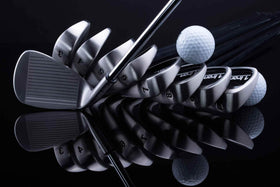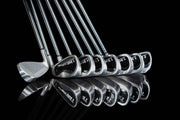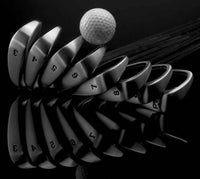Adding Power to your Golf Swing
by David Lake
Swing force refers to the power you develop during the backswing and apply during the downswing through impact. Practically all of this power stems from the torque created as the torso is rotated around the hips during the backswing. When this torque is at its peak the downswing begins and unleashes this built up power to produce a powerful swing through impact. Although all golfers know this, it is very rarely applied correctly. In order to build torque between the torso and hips it is imperative that the torso actually rotate around the hips. This means that the hips and spine must remain in a stationary plane throughout the backswing. In other words, no swaying laterally to the right during the backswing or swaying laterally to the left during the downswing. It is impossible for the torso to rotate around the hips if the golfer is swaying laterally. Also, it is impossible for a golfer to bring the golf club behind him during the backswing when swaying laterally to the right. Instead of bringing the club behind, it is simply being pulled upwards and out to the right side resulting in an extreme outside to inside swing path during the downswing causing poor ball contact and a slice. It also causes the golfer to make a lunging motion towards the golf ball during the downswing that may feel powerful but is actually devoid of any effective power.
You may have heard the term “swinging in a barrel”. This is exactly what you should try to imagine during your backswing. Standing as still as possible, you should try and rotate your shoulders around a stationary spine until you cannot rotate them any further. Try to keep your hips facing forward although they will actually turn a little, and the relative position of your head should not change throughout the entire swing. Rotating around a stationary base will automatically bring the golf club behind you and not up and out to your right side. Personally, I keep my right elbow tucked in and allow it to circle my waist during the backswing, which assists greatly in bringing the club behind me. Remember – swaying to the right during the backswing is disastrous, whereas, swinging the golf club around your body results in the development of a tremendous amount of torque between your torso and hips. The equation is very simple: the greater the torque, the greater the power. It is also very important during your backswing to keep your left heel firmly planted on the ground. Lifting your left heel allows your hips to turn to the right eliminating any chance for torque to develop. Even the slightest lifting of your heel during the backswing will decrease your power dramatically.
The downswing begins by simply letting the built up torque release itself. Do not try to rush things by starting the downswing with your arms, but instead, just let your torso uncoil around your hips naturally. What you will find is that your downswing will begin slowly and then gain speed as the built up torque fully releases through impact. Keep your arms relaxed throughout the swing and just let them go along for the ride.
Many golfers would claim that the arms are a major source of power in the golf swing; however, nothing could be further from the truth. An arm swing requires the flexing of the arm muscles which slows down the swing considerably. Let me prove this to you: hold your arms straight out at your sides flexing your shoulder and arm muscles as hard as you can. Now bring your arms down to your sides as fast as possible. Do the same thing again but this time relax your arms and shoulders and just let your arms fall naturally by gravity. Did you notice that your arms reached your sides faster when relaxed? If your arms are in this relaxed state during the swing then your swing speed will be maximized. A powerful golf swing is produced by the body and then unleashed through the free swinging of the arms. Trying to produce power with the arms actually reduces swing speed and lessens control.
In my opinion, the perfect representation of a powerful golf swing can be seen in a common children’s toy. The toy that I am referring to consists of a drum on a spindle with two strings hanging down on the sides of the drum with beads attached to the ends. When you rotate the spindle back and forth between your palms the strings fly around the drum striking the drumhead with the small beads. As can readily be seen, the power in this toy is being generated by the rotation of the spindle and transmitted through, not produced by, the strings.

As mentioned before, the power of a golf swing is generated by the rotation of the torso around the solid base of the legs and hips. This buildup of power lies in the tension created by a maximum torso turn with minimum hip turn, and if you wind up like a top from the feet up you will not create this tension. Most golfers will not be able to make a full back turn without exaggerating the hip turn, and this is perfectly fine because a full back turn by itself does not generate power. It is the tension created between the torso and hips that creates the power and a one-half or three- quarters back turn with this tension will create more power than a full turn without the tension.
The idea of a full back turn has led many golfers to lift their left heel off the ground during the back swing since this is the only way that they can complete the turn. What this does is to relieve the tension built up between the torso and hips thus reducing power. It also lessens the control of the golf shot because it creates more mechanical movements in the downswing. If you wish to dramatically increase power in your golf swing keep your left foot firmly planted on the ground.










